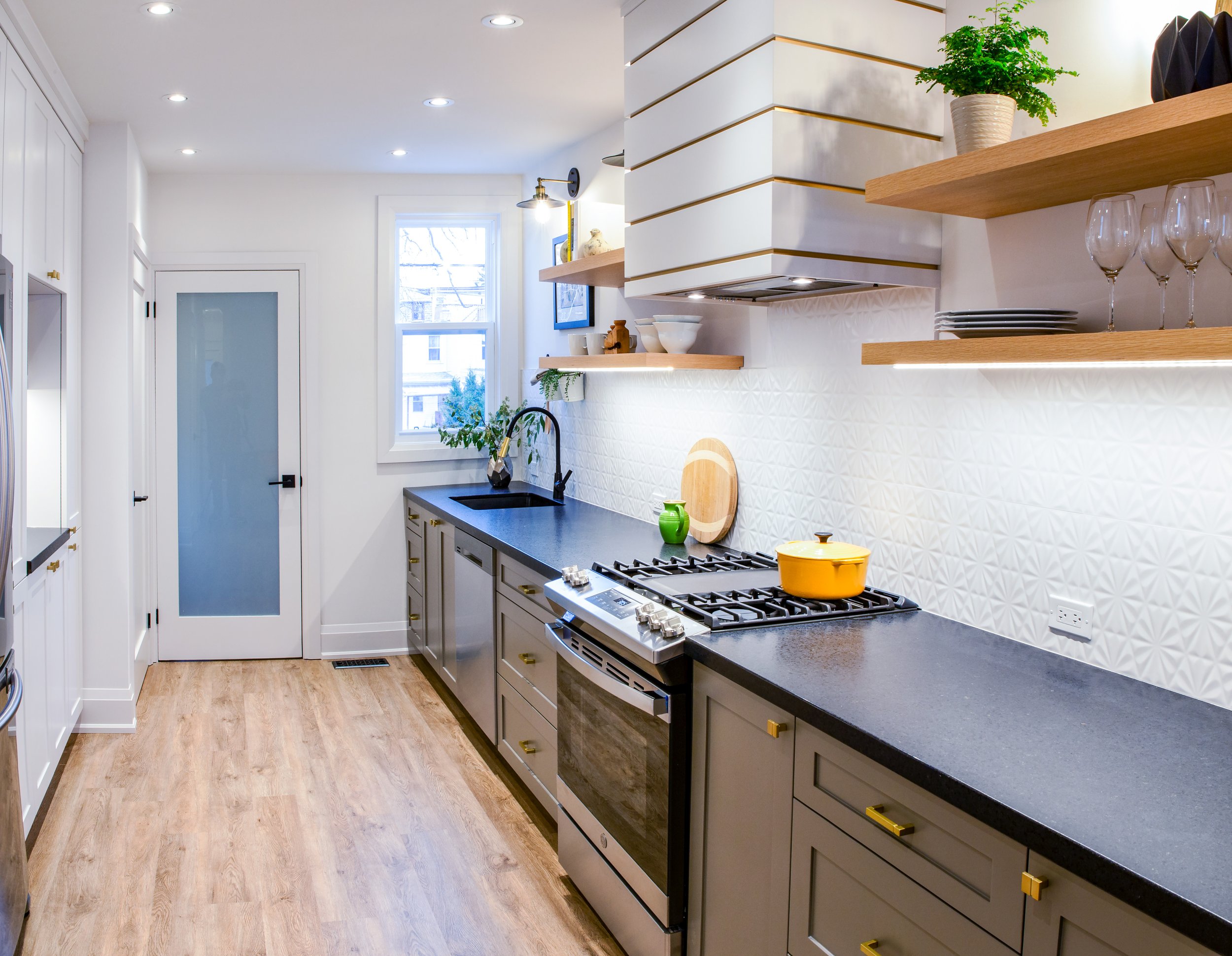Three keys to great lighting
September 23, 2021
One of my favourite design activities is choosing great lighting. It can make or break a room and usually comes down to layering, scale and consistency.
Layering
Overall, I like to start with the number of lighting elements required in a room. You will get a better result with layered lighting as opposed to a single light source. Combining a central fixture, recessed lighting, wall sconces, lamp light, art light, and in the case of a kitchen, under-cabinet lighting, will create a warm and functional space. Having a sense of the type and number of light fixtures you are aiming for will help guide your choices through the design process.
Here is a good example of how multiple light sources (including a window) combine to make a bright and inviting kitchen, despite the lack of a central light fixture.
Scale
One of the most common issues I encounter in a space is under or over sizing the individual elements in it. This applies to almost every element in a room from furniture to art and particularly affects key features like a fireplace, table or TV. It is often what makes people feel unsettled in a space, without being able to identify why. They can recognize that something is off about the space, but can’t identify what doesn’t work about it. Lighting is no exception and given how visible it is in a space, can often be quite jarring if it is sized improperly.
I’m currently working on a more in depth blog post for properly sizing a central light fixture. But in general, consider the size of the lighting element in relation to the size of the room and how it is providing light for other elements in the room. Think of it like hanging art. You shouldn’t hang a large scale painting over a tiny chest of drawers. Similarly you wouldn’t choose a giant vanity light for a tiny sink in a bathroom.
This basic premise of scale and proportion is critical. People often get into trouble when they pick individual elements that they love, without considering their size in relation to the room and other elements. To keep scale and proportion in harmony, ask yourself these questions when considering a lighting element:
Does it work with the size of the room?
Is it providing the right type and amount of light? (i.e. does it provide too much or too little light in a particular area)
Does it work with the size of other elements in the room?
Consistency
Try to marry the style of your lighting with the overall vibe of the room and don’t be afraid to mix finishes. Start with the style of furnishing in your room. For example, do you have a mid-century vibe? If yes, you don’t want fixtures dripping with crystals. You can have contrasting finishes, as long as they are complementary and fall within a similar, consistent style that works with the space.
And don’t be afraid to be bold with your choices. As long as the scale and style of the light fixture is consistent with the space, it can be large and make a real statement. Often a bold central light fixture can take a room from okay to magnificent. Check out this 6’ tall beauty in a suburban family room.
These days most of us are using LED lighting. LED bulbs come in a range of warm to cool light and are measured in Kelvins. The wrong colour temperature (or mixing different temperatures in the same room) can totally ruin the feeling in the room. Here is a quick guide courtesy of Westinghouse:
Personally, I like to choose one temperature and stick with it throughout a house. 3000K is a good temperature for most spaces and having the same colour temperature throughout helps harmonize the space.
Don’t forget dimmers! They allow you to easily manage the lighting mood. Just make sure to get LED compatible dimmers and bulbs or fixtures that are capable of dimming.
Can you tell I love lighting? Hopefully this article has given you some tips and ideas to get started choosing some great lighting for your space.
Make your lighting choices fabulous!
If you are having trouble choosing, feel free to email or call us to book a virtual or in person consultation. We’re here to help!




